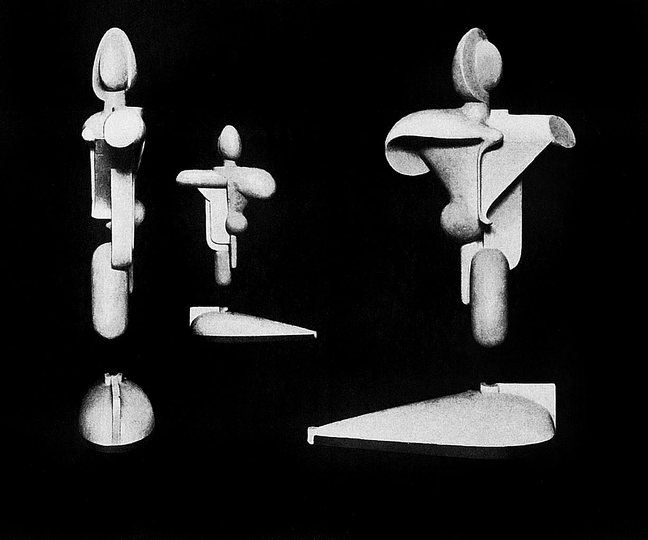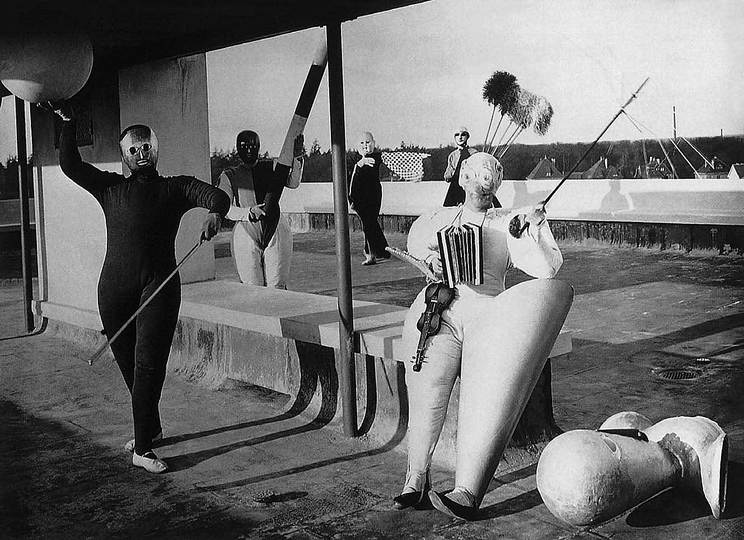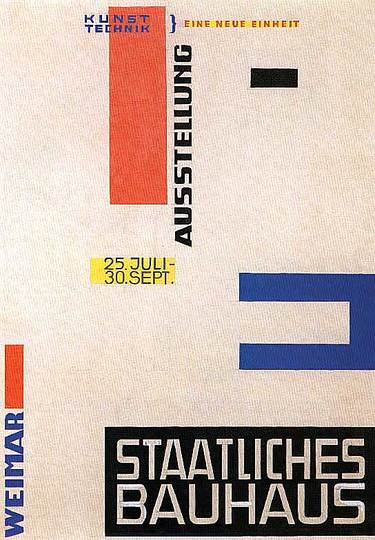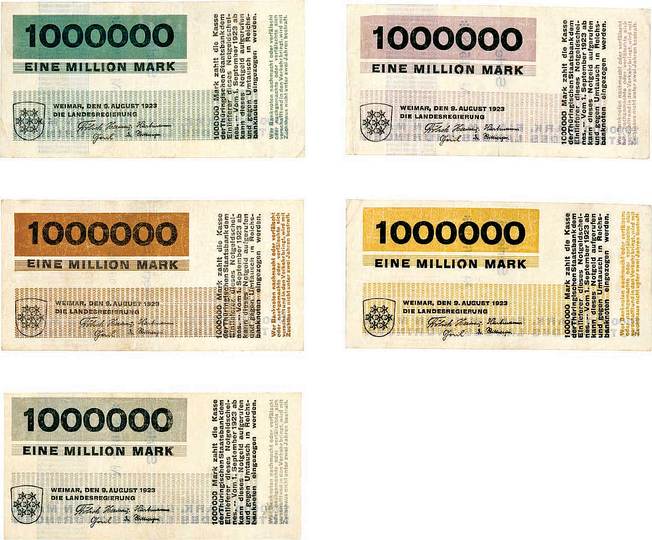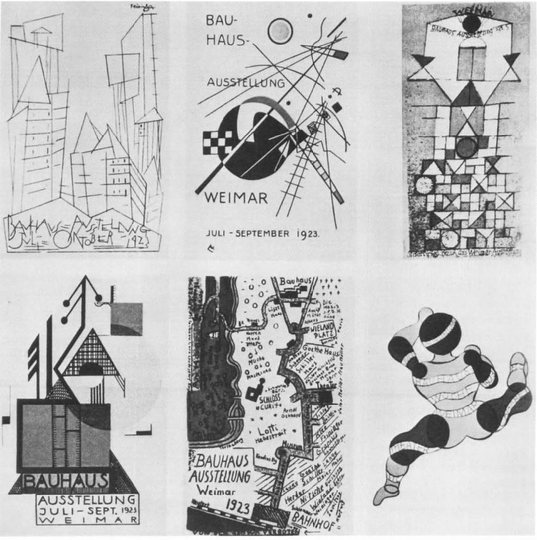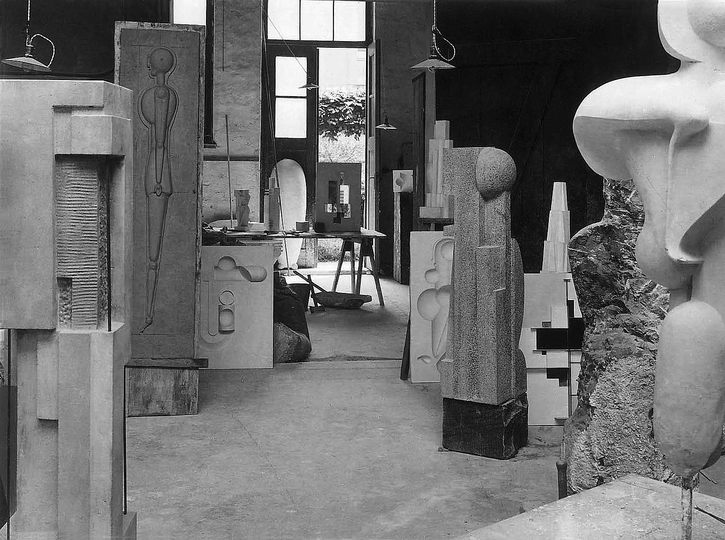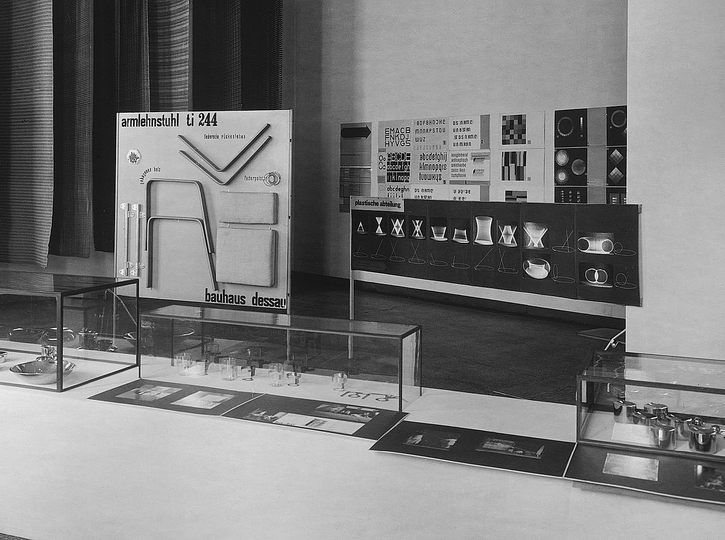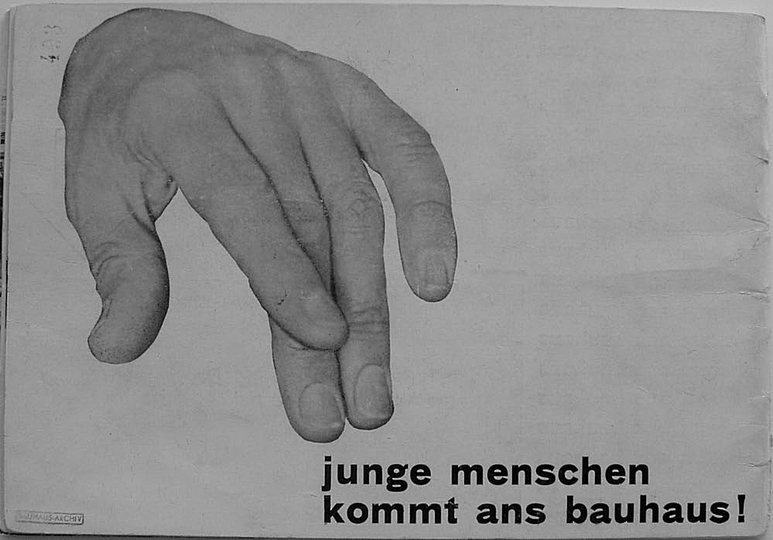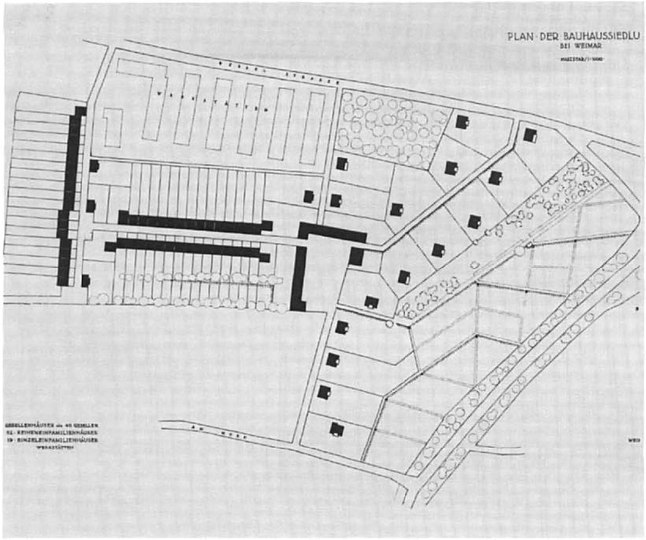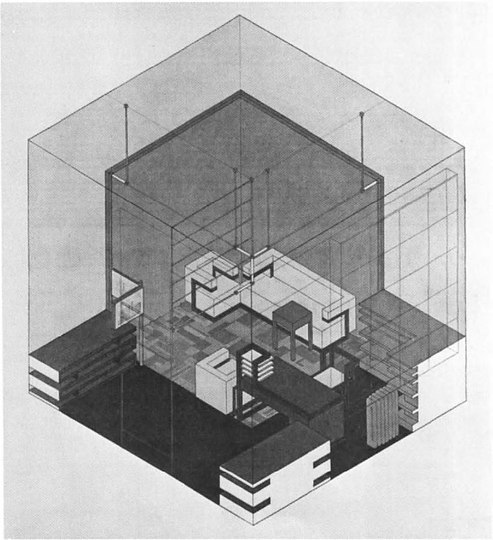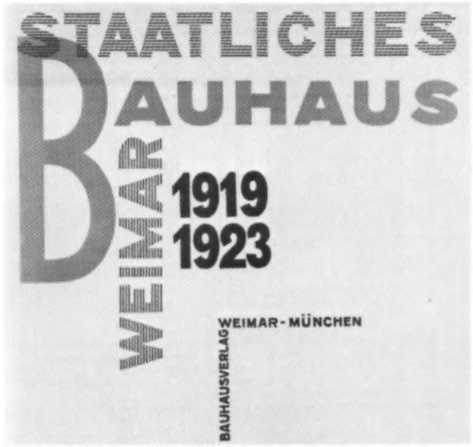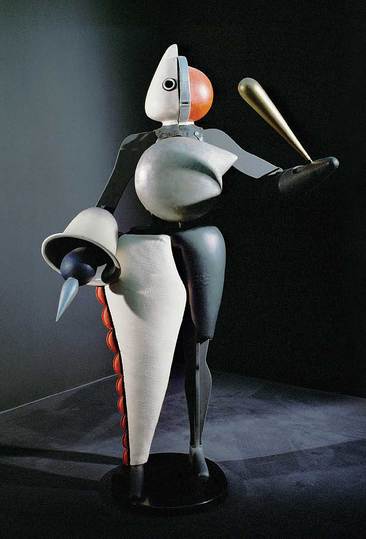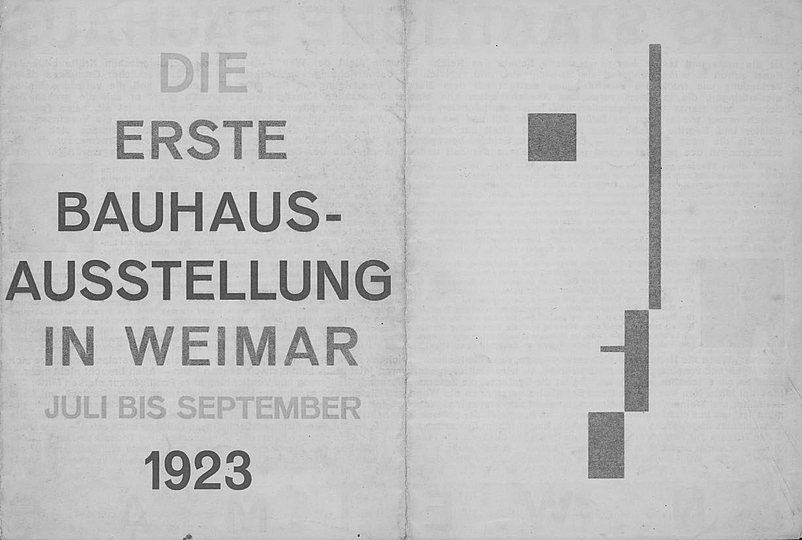Bauhaus: Struggle and Exhibition 1923
In 1922, Walter Gropius reorganised the Bauhaus Masters’ duties. Johannes Itten’s many duties and power were reduced; following Klee and Schlemmer, Moholy-Nagy took over the metal workshop in 1923, Klee took over the stained glass painting workshop, Kandinsky, after an interlude by Schlemmer, took over the mural-painting workshop, Muche the weaving and Gropius himself the furniture workshop. At the same time, the Masters’ Council, the Bauhaus’s highest leadership body, discussed intensely the idea and structure of the Bauhaus. Klee provided a sketch showing the Bauhaus as a globe with a sun motif in the centre. The earth’s axis bore two triangular pennants reading “propaganda” and “publisher” and referred to the Bauhaus Masters’ media strategies, which decisively influenced the corporate identity and international aura of the Bauhaus with their Bauhaus print portfolios, Bauhaus books, the Bauhaus magazine, and with exhibitions and lectures.
In June 1922 the Thuringian state government requested a comprehensive exhibition of the Bauhaus achievements and made the further allocation of funds dependent on it. Gropius scheduled this exhibition for the summer of 1923 and focused the forces of the entire school on this goal.
The great Bauhaus exhibition took place in Weimar from 15th August to 30th September 1923, and included the publication of Staatliches Bauhaus in Weimar 1919-1923, the 1st International Modernist Architecture Exhibition and a Bauhaus Week with concerts, lectures and stage productions in Weimar and Jena.
Gropius gave the opening lecture: “Art and Technology–A New Unity”, to which other Bauhaus masters, most of whom were painters, strongly objected. The activities of the second day opened, in the afternoon, with a lecture by Kandinsky called "Concerning Synthetic Art," and in the evening, Schlemmer´s Triadic Balletwas performed in the German National Theater in Weimar.
On the morning of the third day, Dutch architect Oud gave a slide lecture called "The Development of Modern Architecture in Holland." The German National Theatre in Weimar staged the Triadisches Ballett by Oscar Schlemmer and concerts with works by Krenek, Busoni, Hindemith and Stravinsky. On 4th September the Deutscher Werkbund was given performances of Kurt Schmidt’s Mechanisches Ballett, Oskar Schlemmer’s Figurales Kabinett and Ludwig Hirschfeld- Mack’s (1893-1965) Reflektorische Lichtspiele. The visual arts achievements of the students and teachers were presented in a comprehensive review at the Weimar State Museum.
The twenty Bauhaus postcards for the exhibition, based on designs of the Masters and students with 2,000 copies each, probably led to the first mail-art campaign in connection with the event programme. Train and railway station advertisements, posters and especially city maps made for an unusually professional advertising campaign. This was all achieved while the German currency crashed completely in the summer of 1923, and 60% of the German population was unemployed.
Inspirations.
Technical skill is mastery of complexity, while creativity is mastery of simplicity.
— Christopher Zeeman
— Christopher Zeeman
- penccil is free.
- No trackers. No cookies.
Just creativity.
